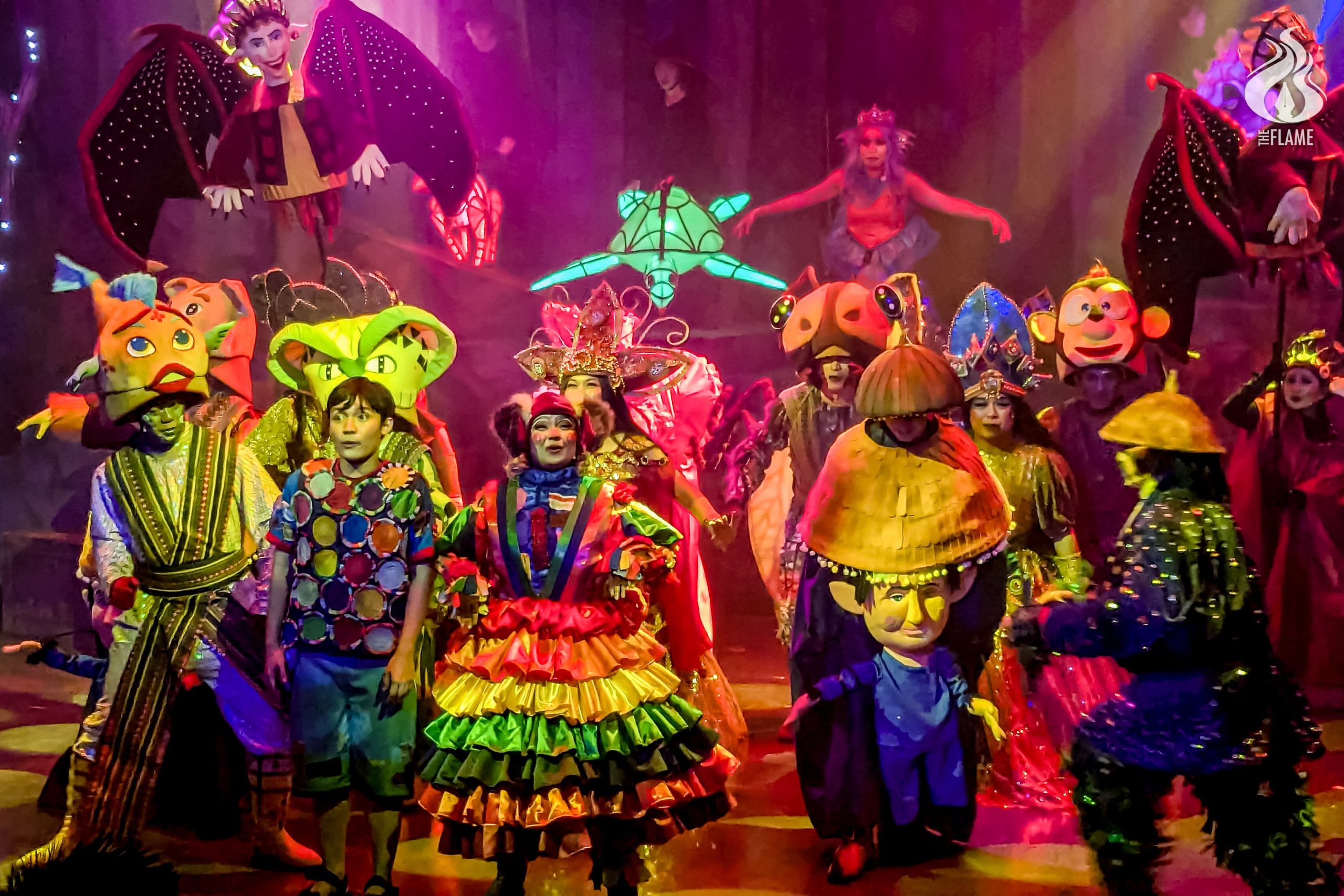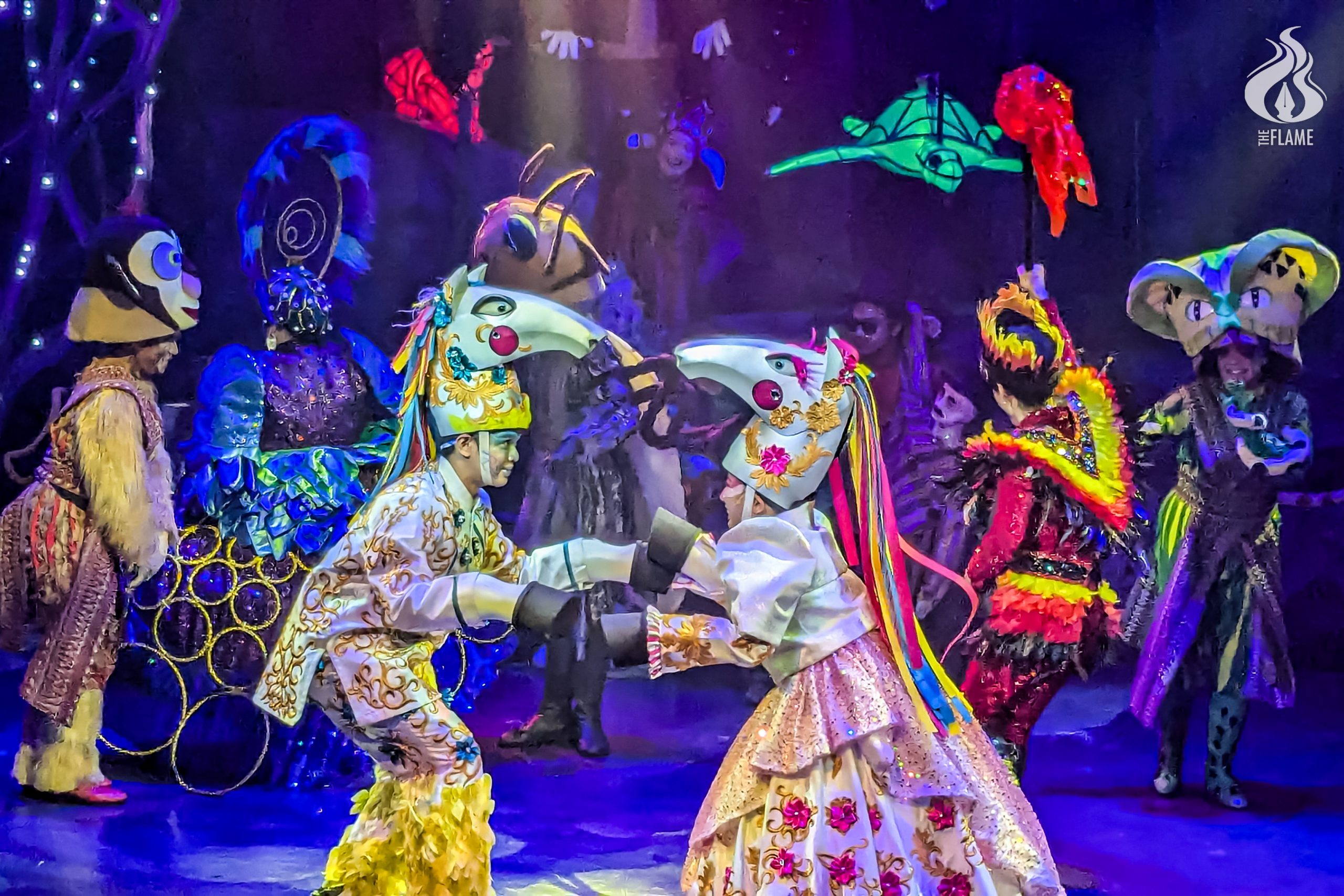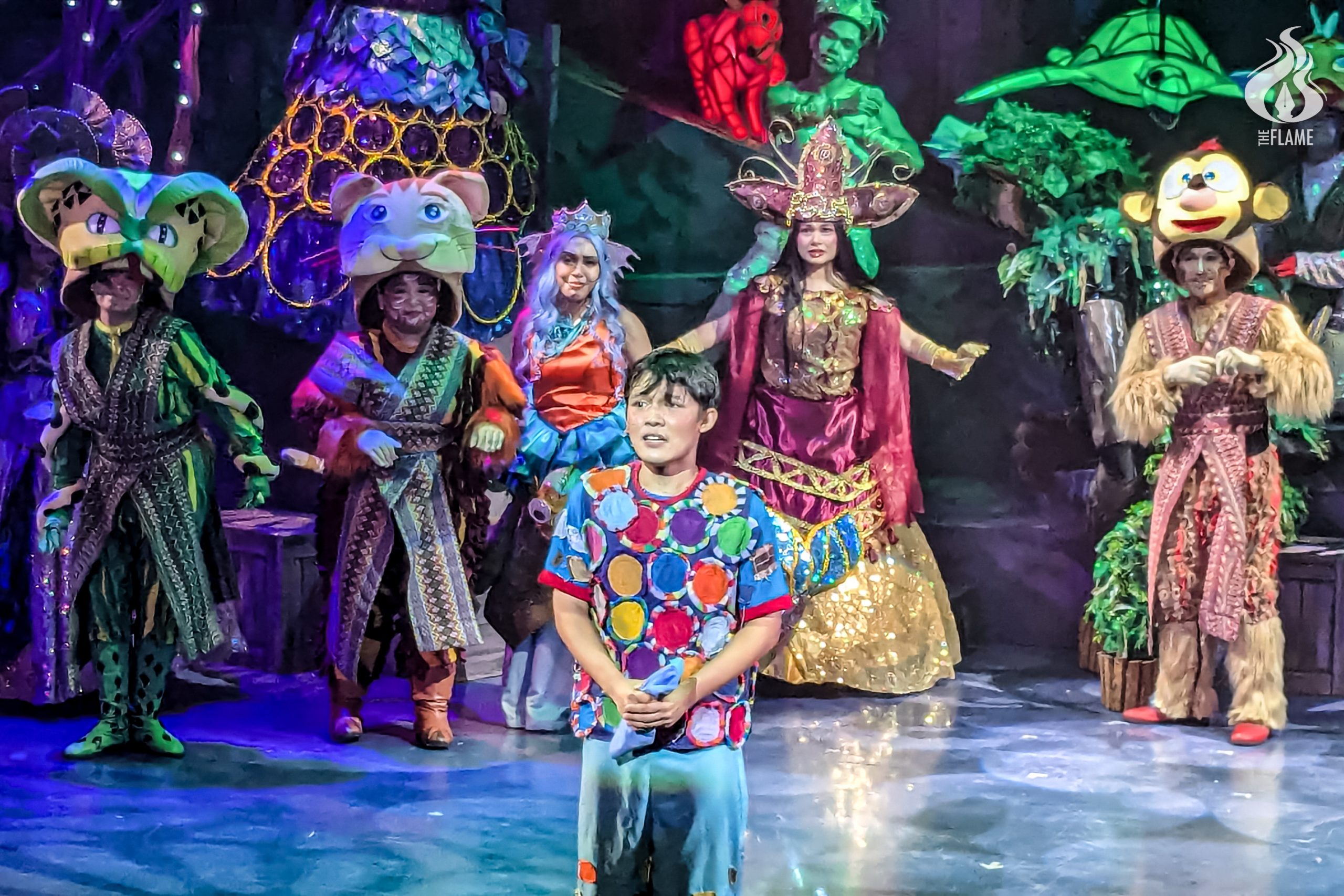
IF REALITY is not enough to create awareness about the dangers of polluting the environment, then perhaps supernatural allusions may serve the purpose.
While humans see themselves as the cultivator of Mother Nature, they are merely accessories and causes of suffering in the eyes of the “magic circle” of Philippine mythological creatures and the forest where they live. But the essence of these beings and their abode have been long forgotten by humans.
Such is the case for literary legend Gilda Cordero-Fernando’s Palanca Award-winning fantasy story The Magic Circle, where forgotten main characters and humans are the perpetrators and observers.
Jepoy and the Magic Circle, the latest musical from acclaimed theater veteran and creative director for Repertory Theater for Younger Audiences (RYTA) Joy Virata, debuted last Oct 5. It is based on Fernando’s story and is an attempt to bring the protagonist Jepoy, the creatures as well as their struggles and ambitions to life. The musical will run until Dec. 15 at the Repertory Philippines (REP) Theater at Citywalk, Eastwood City in Quezon City.
The Oct. 6 show of Jepoy and the Magic Circle featured Yhuan Gatbunton as Jepoy, a poor boy who lives with his washerwoman mother Aling Barang, played by Mikke Bradshaw-Volante, and their dog Galis who was portrayed by both Francisco Gatmaytan and Cara Barredo.
The family lives in a home by a forest, a haven for many creatures from Philippine mythology. However, the creatures are in danger due to their community’s plan to expand its urban areas by cutting down trees and wiping out the forest.
When Galis drags a cloth out of Aling Barang’s laundry pail and toward the forest, Jepoy chases her. This leads him to a Balete tree where he meets Paqui (Stephen Viñas), the head of the forest, and the encantos or the magical spirits of the forest. Through this, Jepoy discovers his true purpose in life and the misery the spirits are facing.
Many of the mythical creatures in the play live in a forest beside Jepoy’s house that is vulnerable to deforestation and pollution. They are perceived strangely by the community outside the forest even though most of the people have not talked to or seen them. Thus, Jepoy’s catharsis and purpose in life lies in the fact that he will be the one who will save the forest and prove that the creatures are just as innocent as the humans who are harming them.
The musical was a colorful presentation of Philippine mythological creatures. Many of these animals were portrayed through the use of costumes that had their own personal touches. Each character donned a unique combination of colors reflecting their characters.

Examples of this were the manananggal’s red and white palette, the tikbalang’s combination of white and gold, and the kapre’s heavily green attire that resembled a tree. Some of them also wore headgears that redembled the faces of the animals they were depicting.
Even the creatures who are often associated with evil such as the manananggal, ipis and aswang were given light-hearted profiles thanks to their carefree dialogues that highlighted their dream of preserving their home and relationship with Jepoy.
Through these aspects, each character was easily recognizable at a single glance even if all of them were piled together on the stage.
The plot line of Jepoy and the Magic Circle was linear given that the play is meant for younger audiences. However, its commentary on environmental issues and how some people tend to detest others for being different in terms of physical appearance or mental outlook was a delight to watch.
The biggest surprise was the interactivity of the musical, particularly Jepoy’s decision to involve the audience in fulfilling his goal by talking to them towards the end of the play. Jepoy asked the audience for assistance in saving Mother Nature, to which the audience agreed, allowing them to take part in the story by representing Jepoy’s community. By breaking the so-called fourth wall that separates actors from audiences, the story established its goal of invoking a sense of responsibility among spectators, especially among children, when it comes to preserving the environment.

The cast’s acting was not just a visual treat but also an emotional experience as they brought ancient Philippine folklore to life. Their ability to portray both the grace and vulnerability of the characters showed the audience that these legendary beings were also capable of feeling the same emotional weight that humans experience. Yhuan Gatbunton as Jepoy placed the audience on an emotional rollercoaster ride before plummeting into a redeeming finale.
Jepoy and the Magic Circle’s music was on a level of its own. I Heard, the primary song that introduced the audience to the mysterious forest that was sung by Jepoy, was one of the catchiest and most emotional songs throughout the play. It made sense for the lyrics of the musical’s songs to be appealing and easy to sing along to because Virata’s target audience is children. However, she also did not shy away from imbuing a sense of urgency within the songs’ lyrics to remind the young audience that Jepoy, his family and the creatures of the forest were truly in danger and needed help.
Jepoy’s life-changing experiences took place in the forest. The combination of tall trees, dark lighting, thick fog and twinkling lights to represent stars captured the mysterious and magical ambience of the forest.
One of the most creative props throughout the musical was a spiral light that looked like a portal from the perspective of the audience. This portal was attached to the trunk of the Balete tree and was used by Jepoy and the other creatures of the forest to reach the bottom of the tree.
Even the life-sized models of pilandok, pawikan, baboy ramo, Philippine eagle and tarsier that were introduced at the start of the play were enough to put the audience in awe.
Perhaps the biggest drawback in Virata’s musical was how she relied on dialogues and narration to portray the disappearance of Jepoy’s father in the latter half. Virata used flashbacks and scenarios to visibly show how Jepoy’s father and mother met. She could have incorporated the same technique to highlight the tragedy of the father’s life by depicting his disappearance through actual scenarios.
Nonetheless, the faithful adaptation of Cordero-Fernando’s short story allowed Jepoy and the Magic Circle to teach the audience a common lesson through its well-produced choreographies, acting, music and spectacle as well as the use of Philippine mythical creatures and folk stories. It brought Philippine mythological creatures to life as a reminder that humans can do more positive deeds, such as discovering one’s true purpose in life and becoming more aware of nature’s essence than exploiting the environment for selfish desires. F



